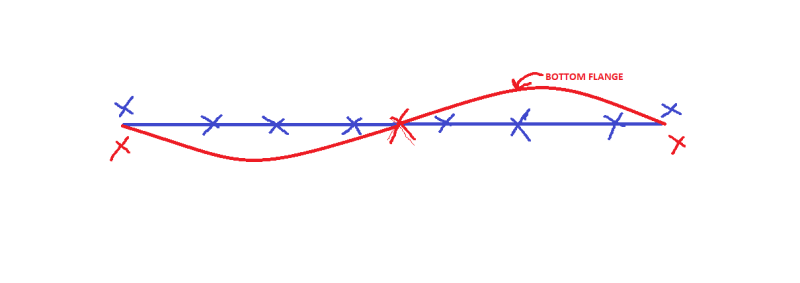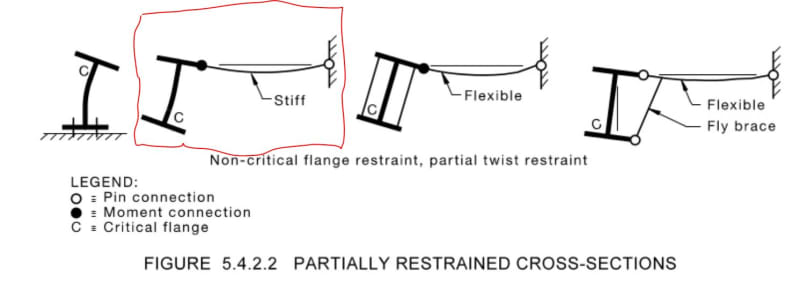steveh49 said:
I think there might be a quick and easy first test we can apply. Taking the W27x84 and the same bi-linear shape of the moment diagram from the test case, I reduced the maximum bending moment to 1240 kNm which is the design section capacity phi.Ms. I then increased the sub-segment length until the AS4100 LTB capacity phi.Mb = phi.Ms. The sub-segment length was 5.065m (ie from end of beam to the inflection point) giving overall beam length of 20.26m before LTB governs according to AS4100.
If I may be so presumptuous, I believe KootK will have an opinion on whether this is realistic or not. If that opinion is that it is not, he may never 'drop his bone' and accept AS4100. That doesn't need to end the discussion but people may at least continue knowing that.
Firstly, please recognize that my only beef with AS4100 at this time is that:
a) I don't understand it on a theoretical basis and;
b) A room full of smart, AS4100 practitioners seem incapable of explaining it to me on a theoretical basis.
I presently have no concerns regarding AS4100's level of conservatism for LTB checking.
So on to the fun stuff. Your example was clever. Me likey. As I understand it, the crux of the example was to exaggerate the length of the original problem until constrained LTB
did in fact occur; and, in doing so, suggesting that it would take a rather ridiculous span to make that happen (66.5 ft).
You have rightly presumed that that I would question whether or not your example was realistic. LTB is an abstract mathematical concept and, obviously, I don't have a "feel" for it as I have a
feel for how far I can hit my seven iron into the wind. Moreover, whatever "feel" I do have for LTB is irrevocably tainted by my long history with the AISC provision. So I'll not claim that I can challenge the reasonableness of your hyperbolic example on the basis of intuition alone.
So what can I do to challenge the reasonableness of your example?
1) I could run it in Mastan. I may do this eventually but I wouldn't hold your breath.
2) I could transmogrify your example into one of my own that I feel does an excellent job of teasing out the salient issues and placing them into a context in which "reasonableness" may more easily be judged via intuition. Truly, you'll have to just download the sketch and read the damn thing start to finish. Brief summary:
START
a) I assumed that bottom flange buckling is restrained by two, torsional stiffness components: the St. Venant and the Warping.
b) In the context of constrained axis buckling, the warping stiffness "is" the flange buckling laterally. So that's baked into the cake.
c) I replaced the St. Venant stiffness of the entire wide flange with a CHS member having nearly the same St. Venant stiffness. Everything is drawn to scale.
d) To make the thing tractable, I neglected some things such as the fact that the axial force in flange varies spatially. Still, it is a strut with 406K axial load applied to its ends.
e) The example considers the compression flange of the beam as a 66.5' flange-column having a slenderness ratio of 276. The flange-column would have axial compression loads to the tune of 406,000 lbs applied to the ends. This is actually more than the {As x Fy = 312k] of the flange. That's immaterial really though. 312k or 406k, it's a crap ton of of axial on a 66.5' column with a 276 slenderness ratio.
f) Naturally, we must consider that the flange-column is actually
braced along it's 66.5' length. That bracing:
a) comes from the St.Venant torsional stiffness of the section;
b) varies linearly in it's effectiveness;
c) is at a maximum at near the supports and;
d) is at a minumum at the center of the beam.
This is what I have represented with the CHS section in the faux representation.
FINISH
So, assuming that I haven't screwed something up in my rush to pull this together, the question becomes:
How reasonable is it for us to expect that the 66.5' flange-column of my faux model will not buckle under a 406,000 lb load?
Seriously, what do you think?
EDIT: here's a dropbox link to the sketches in PDF format:
Link. The file upload feature here is no longer working for me either.

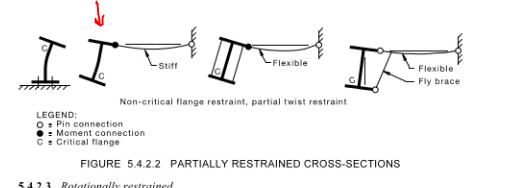
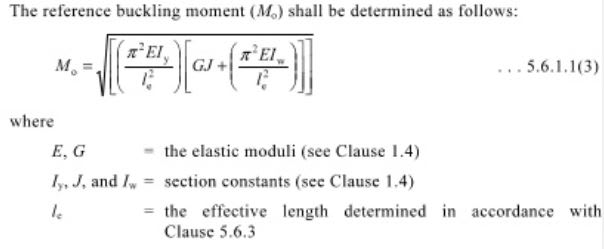

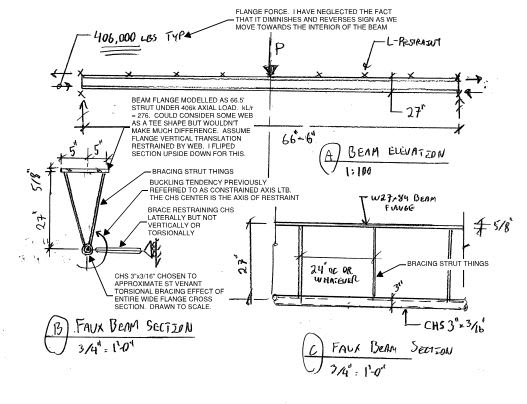
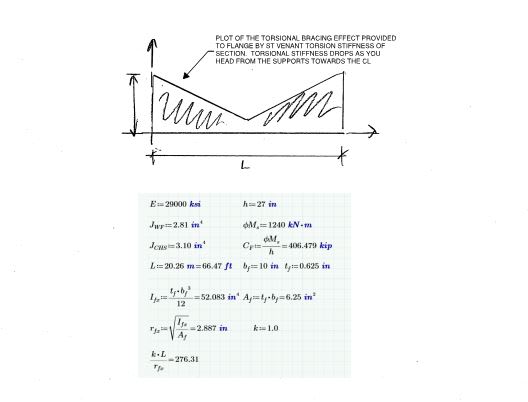
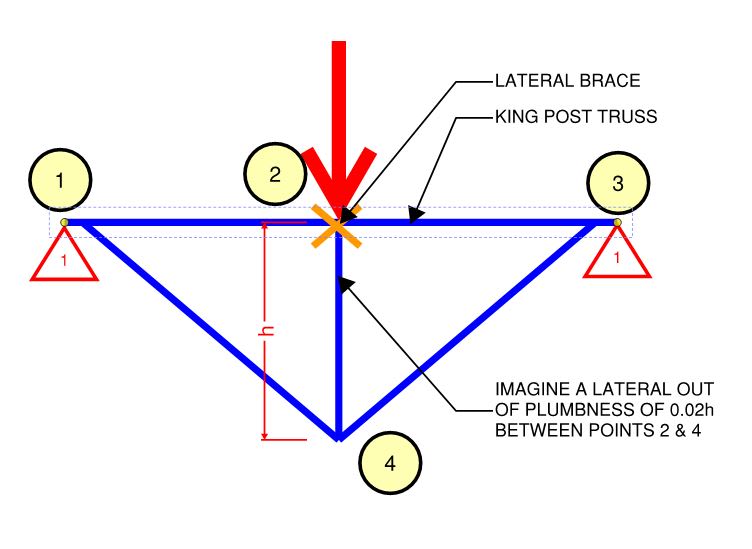
![[2thumbsup] [2thumbsup] [2thumbsup]](/data/assets/smilies/2thumbsup.gif)

![[bigsmile] [bigsmile] [bigsmile]](/data/assets/smilies/bigsmile.gif)
